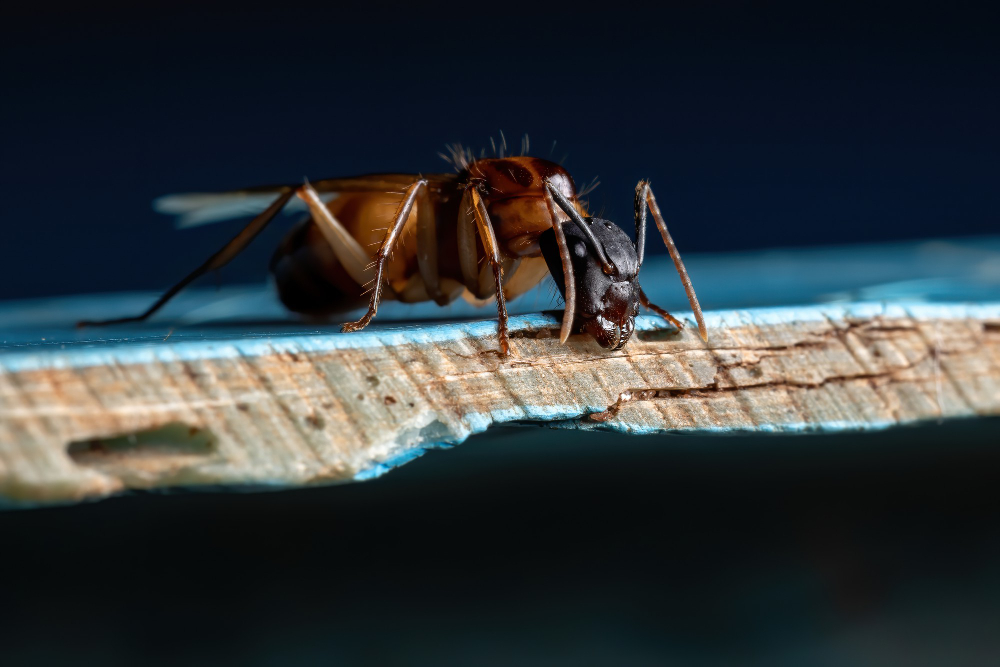There are plenty of Australian native pests that can cause property damage, from termites to ants (yes, really) and cockroaches. Thankfully our country is also home to highly qualified urban pest control experts who can step in to provide many valuable pest management services.
In this article we look at some of the endemic critters and crawlers that can be a nuisance, often causing thousands of dollars in damage. We also share resources on how to manage some of these.
Managing Australian Native Pests
As has happened at times in the past, when we try to eradicate a pest we can end up creating an ecological imbalance. Every organism, including those that become annoying pests, has a role to play in the ecosystem. Because of this, many pests that have been treated – no matter how professionally – will unfortunately return in an attempt to refill that vacant niche.
Therefore, over the long term, pest control is about management and control. This is important for property owners to realise.
Here are some of the most common native critters pest controllers get called out for:
1. Termites
There are more than 360 species of native termite in Australia. Thankfully, only 10% of these can cause property damage. That said, the damage this 10% does can cause structural and cosmetic damage to buildings. Damage that decreases a property’s value no matter which way you look at it – sometimes into the hundreds of thousands of dollars.
A 2012 study reveals termites cost Australians $1.5 billion each year in property damage and treatment.
Here are some of Rapid Solutions’ resources on termite prevention and treatment:
- Termite treatments: The fundamentals explained
- Preventing the return of termites: Best practice techniques
- Termite management plan: What it is and why you need it
- Termite management insurance claim: A real life example and its impact
As a pest controller, you’re well aware of the damage termites can do to a property. Your customer on the other hand might not realise until it’s too late.
Here’s a video that shows the real damage these tiny chewers can cause:
2. Possums (Protected By Law)
While a possum may set up camp in your customer’s rafters or toolshed to keep cosy, you may not exterminate or hurt it in any way according to Australian law. These guys are protected and as a pest controller you’ll need to get a licence from your local environment office to legally and safely remove them from a property.
Possums range from the size of a mouse to the size of a cat and a telltale sign one’s nesting in your roof is the pungent smell of possum pee – or even yellow staining in your ceiling!
Possums can do serious damage to your customer’s electrical wiring, which is an obvious fire hazard. They can also be a carrier for numerous bacteria, so they can be a danger to humans as this could result in infection and illness.
It’s easy to mistake the small pygmy possum for a mouse. If you’re unsure, contact a professional pest manager for more information.

3. Ants
There are around 15,000 species of ant worldwide, of which 1300 are native to Australia. Some of these Australian native ants aren’t found anywhere else in the world. And some of these six-legged critters can do significant damage to property.
The Carpenter ant can do just as much damage to buildings as termites, burrowing through building structures and leaving behind a trail of dust.
Other native Australian ants to watch out for include:
- Sugar ant. This ant can cause build their nest in buildings and cause structural damage
- The bull ant. Its venomous sting can cause an anaphylactic shock that in some humans can be fatal
- Green-headed ants. These ants like to nest in gardens and can deliver a bad sting that can sometimes cause an allergic reaction
These aren’t the only ants that can cause damage to either properties or humans. Rather than go into all of them now, this pest management course for office managers. covers ants and other pests.
4. Bees
Most bee callouts are for the imported European honeybee; however, you may get the occasional call for a local bee. Australian stingless social bees don’t often invade property but have been known to occasionally infest buildings with their nests. That’s property damage no one wants.
As a pest controller, you’ll want to use the latest methods of removal so as not to damage these guys. All native bees are integral to our ecosystem and need to be protected. Read all about bee removal to find out more.

5. Cockroaches
You might think the Australian cockroach is a native species. However, despite its name, this creepy critter is actually an introduced species (why anyone made the introduction is anybody’s guess)! The Australian cockroach is a definite nuisance and does have some native counterparts that are also pests.
Namely, the Australian wood cockroach, that typically inhabits decaying timber. This guy is a strong burrower with a diet consisting mainly of wood, so you may find them infesting a home underneath wood shingles and wood siding and leaving behind unpleasant trails of faeces.
There are 11 Australian species of wood cockroach, most commonly found along the east coast. Small cylindrical bits of poop or pieces of leftover exoskeleton can be telltale signs of an infestation. Or you might find yourself stepping on one in the middle of the night (when they’re most active) on your way to the bathroom and hear a crunch! These bits of waste leftover by wood cockroaches can cause allergic reactions in allergy sufferers.
Learn About Australian Native Pests (And More) With Pest Management Courses
As a pest controller, it’s important to always understand and use the latest pest management methods. Newer techniques and chemicals that are safer for use in offices and homes are constantly being developed.
Be sure to find out all about the Rapid Training courses on offer, which includes accredited and short courses for you and your staff.
You’ll also gain insights into your industry and how you can benefit from professional indemnity insurance and general liability insurance. Together these cover you against a range of unexpected issues such as theft by a staff member, claims made by a client and accidental damage to the environment. Contact us to get a quote on either one or both policies today.

